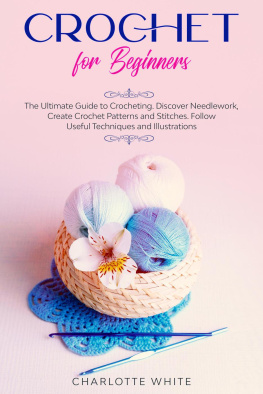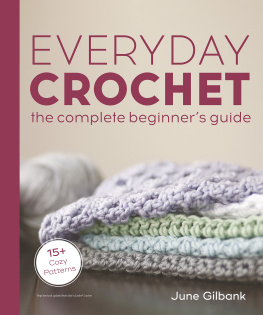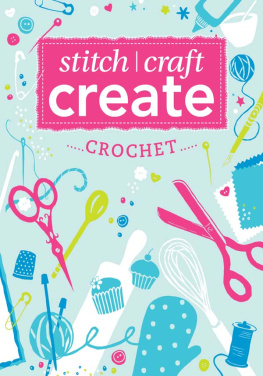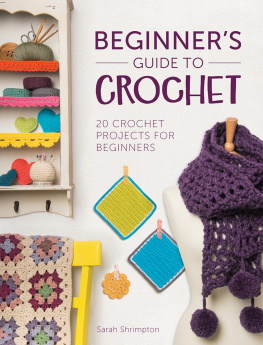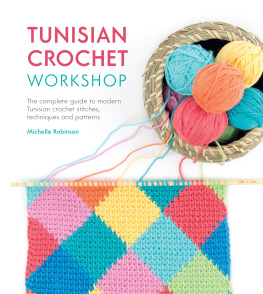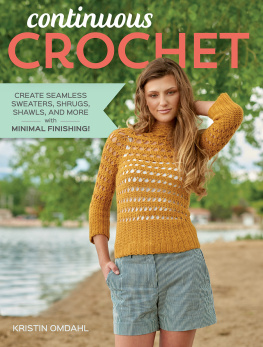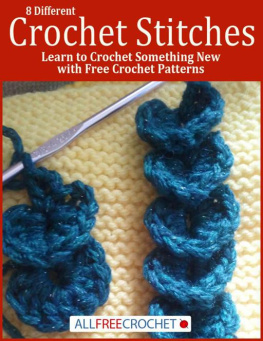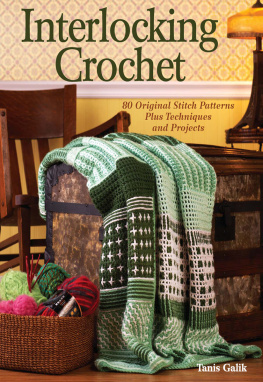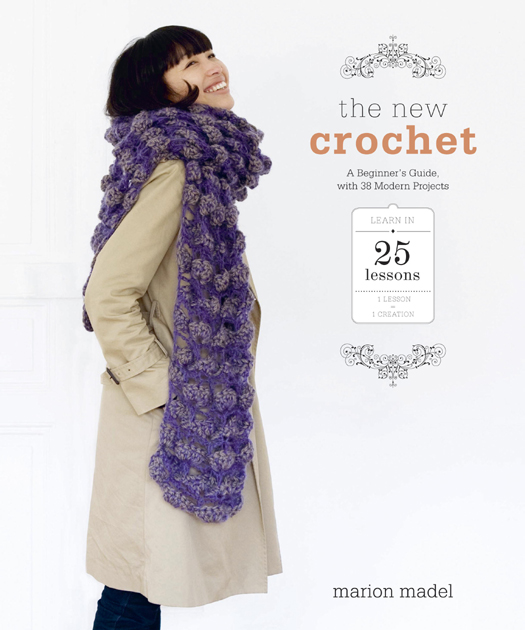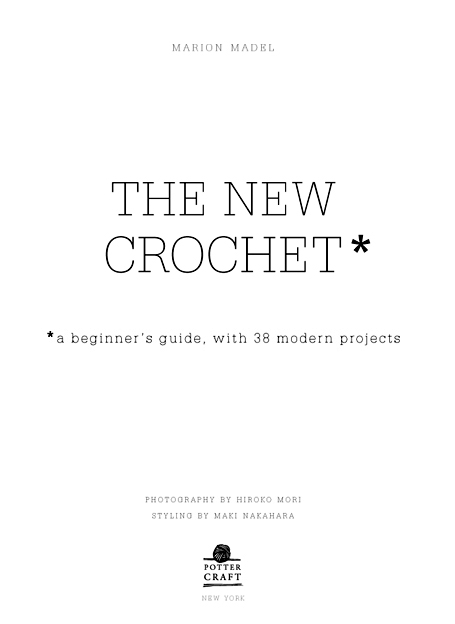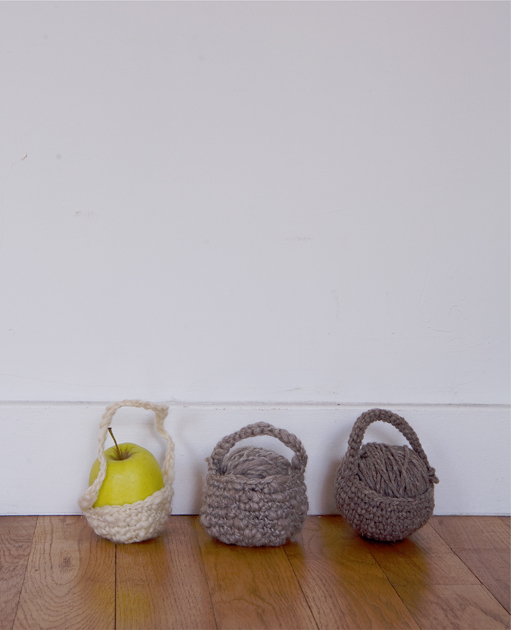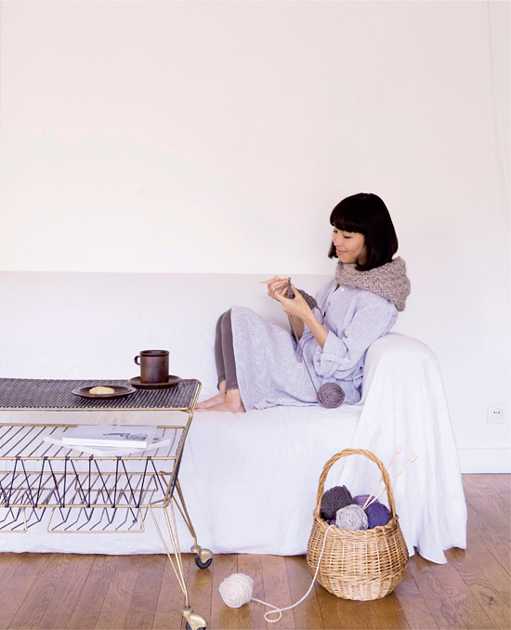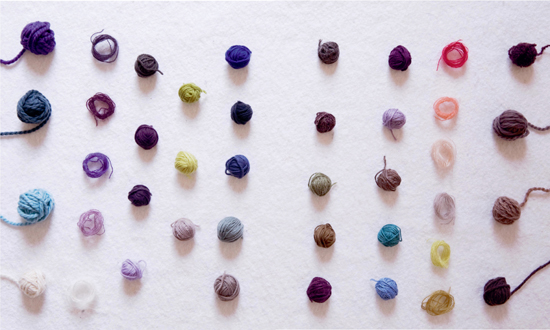Translation copyright 2013 by Potter Craft, an imprint of the Crown Publishing Group, a division of Random House, Inc.
All rights reserved.
Published in the United States by Potter Craft, an imprint of the Crown Publishing Group, a division of Random House, Inc., New York. www.pottercraft.com
POTTER CRAFT and colophon are registered trademarks of Random House, Inc.
Originally published in France as Mon Cours de Crochet by Marabout/Hachette Livre, Paris, in 2011. Copyright 2011 by Marabout/Hachette Livre.
Library of Congress Cataloging-in-Publication Data
Madel, Marion. [Mon cours de crochet. English]
The new crochet / by Marion Madel.
1. CrochetingPatterns. I. Title.
TT825.M155 2013
746.434dc23 2012048976
Trade paperback 978-0-385-34613-9
eBook ISBN 978-0-385-34614-6
Translation by Ben Ross
Interior design by Nicolas Alexandre and Claire Bissara
Photographs by Hiroko Mori
Cover design by Ken Crossland
v3.1
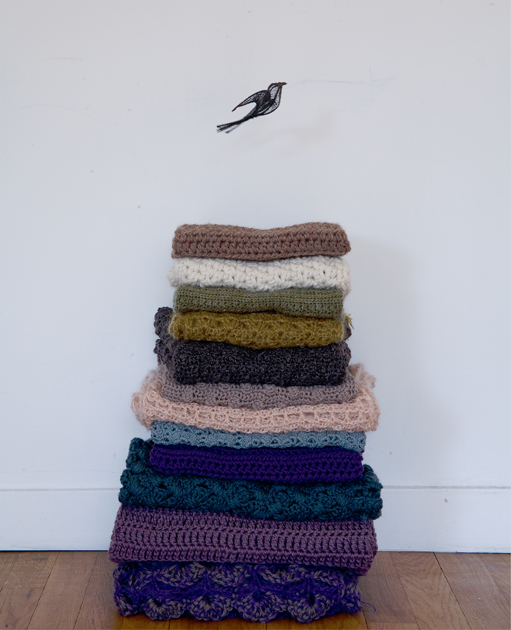
Welcome to the new generation of crochet. From afar, crochet may seem very complicated, but its actually easier than you think. I recommend you first quickly scan the whole book to get the lay of the land, as though you were a tourist in a foreign country. Read the suggestions, browse the directions, and look at the step-by-step photos. Get familiar with the vocabulary, the symbols, and the basic movements to make crocheted stitches. Then you will dive into the heart of the book, beginning with the first of the 25 lessons, which will help you gradually build your repertoire of crochet skills. Get comfortable in your favorite chair, take your crochet hook in one hand and a ball of yarn in the other. Start by creating a foundation chain, then the slip stitch, and all of the basic stitches in the order in which they are presented. Use the detailed step-by-step photos that illustrate each stitch for more guidance as you perfect your technique. Surprise! You notice that crochet is not all that complicated after all. Now that you are starting to feel comfortable in this new world, you are going to learn another language, one with a specific vocabulary, abbreviations, and a visual way of writing made of circles and lines. After some time, and with practice, you will understand all these symbols at a glance. Are you starting to feel at home here? Take your time and experiment with different kinds of yarn and stitches. Make practice swatches before you begin one of the projects that demonstrates each lesson. These projects are designed to help reinforce the technique you have just learned. The result is a collection of simple, timeless garments and accessories that I hope youll wear with pride, including oversized scarves, bags, crocheted trims, fingerless mitts, a capelet, and more. Above all, I hope that you will have fun as you unravel the mysteries of this craft and discover how chic and modern crochet can be.
Marion Madel
CONTENTS
Lesson 1
Chain Stitch
Lesson 2
Slip Stitch
Lesson 3
Single Crochet
Lesson 4
Half-Double Crochet
Lesson 5
Double Crochet
Lesson 6
Treble Crochet
Lesson 7
Horizontal Ribbing
Lesson 8
Vertical Ribbing
Lesson 9
Chevrons
Lesson 10
Floret Stitch
Lesson 11
Sand Stitch
Lesson 12
U-neckline
Lesson 13
Reversible Stitch
Lesson 14
Filet Mesh Stitch
Lesson 15
Open-Work Stitch
Lesson 16
Shell Stitch
Lesson 17
Hazelnut Stitch
Lesson 18
Picot Stitch
Lesson 19
Finishing a Triangle
Lesson 20
Starting in the Round
Lesson 21
Crocheting a Flower
Lesson 22
Assembling Motifs
Lesson 23
Granny Square
Lesson 24
Attatching Two Different Motifs
Lesson 25
Working in the Round
BASIC TECHNIQUES
As with any new skill, if you want to take up crochet, you must first learn the fundamentals. Trust me: If you go at your own pace, step by step, and refer to the advice that we give you in this book, you will have all the tools you need. And youll see that what seems complicated and tedious to you at first turns out, in fact, to be fun and easy. Yes, really! There are certain rules you must follow, but after you learn the basics, the possibilities are limited only by your own imagination.
In this section, well review the essential rules, including how to choose an appropriate hook size for your yarn and desired effect, whether you are working in a basic stitch pattern, three-dimensional textures, or exquisite lace. Well also explore a bit of the vocabulary (chain stitch, double crochet, puff, picot ) and the specific symbols used to produce these patterns. As you move forward in this book, youll have plenty of opportunities to review these methods, and eventually they will be second nature. Every time you crochet a new piece, your skills will continue to evolve. Little by little, you will learn how to polish your technique, tackle more challenging stitches, and nurture your creativity.
SOME NOTES ON YARN AND FIBER
BASIC
TECHNIQUES

YARN
All types of yarn can be crocheted. The choice of a specific type of yarn depends on the project and on the stitch that you are considering using. Are you making an article of clothing or a decorative piece? And if it is an article of clothing, who will be wearing it? Would you use the same yarn for an adult cardigan as for a baby sweater? Depending on the project, you will need a specific type of yarn.
Yarns are widely available in local yarn shops, as well as online (). They come a vast range of colors updated by the manufacturers seasonally based on current trends.
There are 4 groups of fibers from which yarn is made:
fibers derived from the plant world,
fibers derived from the animal world,
artificial fibers,
synthetic fibers derived from petrochemicals
Each category of fiber has its own special qualities and characteristics. Yarn may be made of one type of fiber or blended with fibers from the other families.
1 PLANT FIBERS
Cotton yarn is commonly used in crochet, and is perfect for making lace. Worked very finely, it was traditionally used for embellishing undergarments and baby sweaters.
Slightly heavier weight cotton is used to make doilies and tablecloths in the tradition of Irish filet lace. Cotton possesses undeniable qualities: fine strands, plied tightly that offer great strength. Dyed at high temperatures, cotton has colors that do not bleed. You will find cotton yarns under different names, based on the particular treatments that the fiber has undergone to create yarn with a specialized look and feel.


